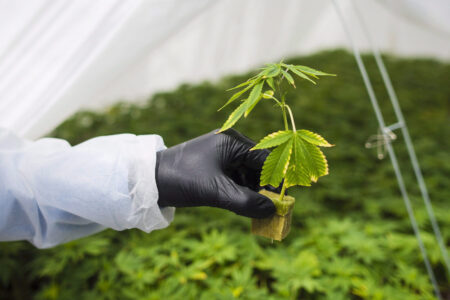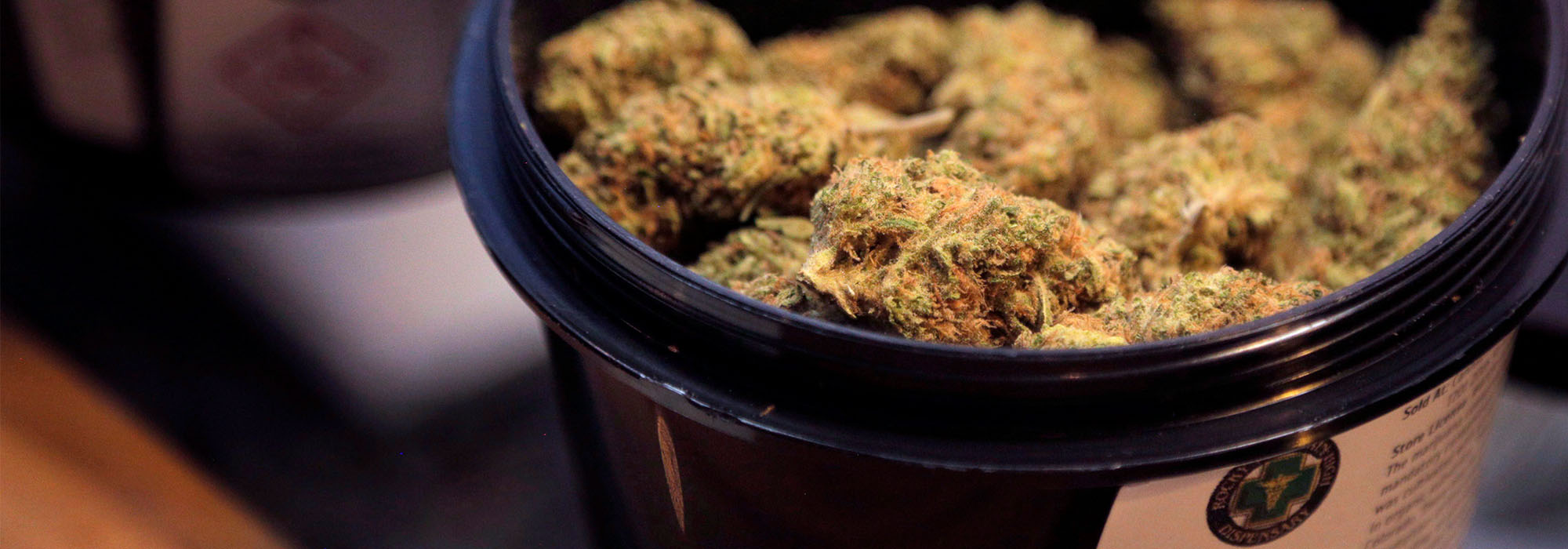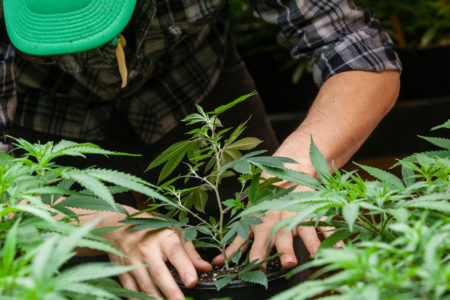
In 2014, Canada opened the door to a competitive, commercial industry of licensed producers (LPs) approved by Health Canada to grow and distribute cannabis for medical purposes. In doing so, the government established one of the most advanced medical cannabis industries in the world, as well as some of the strictest medical cannabis regulations.
Three years later, regulatory and commercial eyes have turned to the federally sanctioned recreational market promised by Justin Trudeau’s Liberals and expected to be in place by July 2018.
The federal government’s intent and commitment have been straightforward: to legalize, strictly regulate and restrict access to cannabis for nonmedical purposes; to restrict youth access to cannabis; and to stop criminals from profiting from an illicit cannabis trade.
The path from this well-intentioned plan to a fully realized, regulated and controlled adult recreational market, however, is less clear. Nevertheless, the lessons learned in other jurisdictions, and from our own challenges and successes in the medical arena, suggest there are several logical places to start in crafting a thoughtful and effective approach to recreational cannabis that can serve as a model around the world.
Safety and security
First, safety and security must always be our number one priority. As I’ve said before, no system of growing and selling cannabis can work without explicit, strict and enforceable rules on product quality, consistency, safety and security.
None are more vulnerable to the policy decisions made related to access to cannabis than our children. Keeping cannabis out of the hands of youth must remain a nonnegotiable, collaborative priority of all of those involved in the cannabis industry. As the Canadian Paediatric Society and the Task Force on Cannabis Legalization and Regulation have noted, minimizing risk begins with minimizing the appeal of the product.
The accidental ingestion of edible cannabis products by children has been an issue in both Washington State and Colorado following their legalization of marijuana. As a result, in 2014, Colorado set out new requirements for the sale of all edible cannabis products, including having the standard serving size (containing 10 mg or less of THC, the chemical responsible for the “high” or intoxicating effect of cannabis) clearly marked on every product; limiting the amount of THC per unit of product; clear labelling of the amount of THC on packages; and providing child-resistant, opaque and resealable packaging. Later Colorado also prohibited any packaging that might appeal to children. In its final report, Canada’s task force noted these best practices and encouraged ongoing monitoring to “determine the effectiveness of these measures.”
Eliminating the illicit market
Safety and security also come from being able to eliminate the black-market supply of cannabis.
Starving the illicit market means competing with it. Today, vaporizable liquids and edibles are a mainstay of the illegal market. From prefilled vaporizer pens to edible cannabis “candy,” there is no shortage of imagination and innovation in product offerings. A serious problem could arise, however, once these products are legalized: if licensed producers are hamstrung by manufacturing regulations and product prohibitions, their production of these consumer cannabis products will lag behind the demand, and customers will turn to illicit sources. Clarity about which product types will be allowed and a timeline for when each type will be legalized will enable producers to prepare production and marketing strategies to help keep cannabis revenue out of the hands of black-market suppliers.
Likewise, forward-thinking policies will recognize that the projected supply of cannabis — even taking into account that the roster of current and newly approved LPs is already growing — won’t be able to meet the demands of the combined Canadian medical and recreational markets. Due to the long lead times required for expanding production capacity, LPs will need months, if not years, to plan for that expansion. The government should announce any anticipated changes to the regulations as early as possible so their impact can be integrated into production planning.
Taxation is another potential weapon in the fight against an illicit cannabis market. Unfortunately, the task force has recommended that the same taxes should apply to both medical and recreational cannabis. This thinking is misguided for several reasons. First, since Canada recognizes medical cannabis as a legitimate therapeutic option authorized by a physician, the same tax exemptions that apply to prescription drugs should apply to medical cannabis. Second, due to the chronic and debilitating nature of the conditions many medical cannabis patients live with, the income of many of them tends to be lower than the Canadian average, and access to effective therapy at an affordable cost is critical to managing their condition and maintaining their quality of life. Perhaps empathy should be added to our guiding principles, alongside safety and security. Price should not be a barrier to care.
The end price of both medical and recreational cannabis —– after accounting for production costs and standard markups — needs to be competitive with black-market offerings. The benefits of potential tax revenue would not outweigh the risks of driving Canadians to bolster illegal enterprises simply because they can find a better deal on the illicit market.
Distribution and enforcement
Where Canadians will buy cannabis is another important policy consideration. As with alcohol, the final distribution decisions will fall to the provinces, and we will see variable frameworks that will reflect provincial preferences and priorities. A hybrid approach, featuring both retail and mail delivery options, seems to make the most sense, because it would help ensure continued access for customers outside major urban centres.
Selling cannabis in the same places that sell alcohol, however, would be problematic, despite the argument that alcohol retailers are already trained to prevent under-age purchasing. Importantly, research suggests that many Canadians are using cannabis as a harm-reduction strategy: 25 percent of those surveyed reported they were substituting cannabis for alcohol. For these people, visiting alcohol retailers is not only counterintuitive but potentially harmful. While it may not be feasible to separate cannabis and alcohol retailing in some locations where the size of the market and the required infrastructure pose challenges, the needs of harm-reduction users should be a consideration in developing the distribution models.
Regardless of whether cannabis is sold at retail outlets or by mail, a rigorous, enforceable process for validating the age of the customer is necessary. Similarly, regulators, law enforcement and the research community must continue to look for standardized ways to measure impairment caused by cannabis consumption. In Colorado, it is illegal to drive with more than five nanograms of THC per millilitre of blood. Unlike with alcohol, however, there is no direct correlation between the amount of THC in the bloodstream and a driver’s impairment; because THC is metabolized by everyone differently, current blood tests are an imperfect tool. More reliable roadside tests are being developed. In the meantime, police officers in Alaska, Oregon and Washington are trained to identify the telltale signs of cannabis impairment, including reduced cognitive and motor function, in the same way that they test for impairment due to prescription opioids.
Brand development
Facilitating access to cannabis also means allowing room for brands to establish themselves and grow. If we are to normalize the marketing of cannabis, particularly after legalization, we must offer cannabis producers and marketers the opportunity to differentiate themselves and provide Canadians the opportunity to make informed consumer choices based on typical considerations such as cost, quality and personal preference. From a policy perspective, this means guidelines must allow for responsible use of creative design, packaging and pricing strategy; rules for the alcohol industry can be a model. Brand development will become more important as cannabis consumption moves away from smoking and toward edibles, oils and topicals, as we’ve seen in more mature markets such as Colorado and Oregon.
Cannabis in Canada is in a time of dynamic change. The measure of success, for both public policy-makers and the industry, will be how well we protect ourselves and our children from any potential harm while encouraging the operation of a free, competitive market that balances commercial and social success.
Photo: A container of marijuana at Cannabis Station dispensary on Monday, April 24, 2017 in downtown Denver.THE CANADIAN PRESS/Joe Mahoney
Do you have something to say about the article you just read? Be part of the Policy Options discussion, and send in your own submission. Here is a link on how to do it. | Souhaitez-vous réagir à cet article ? Joignez-vous aux débats d’Options politiques et soumettez-nous votre texte en suivant ces directives.






